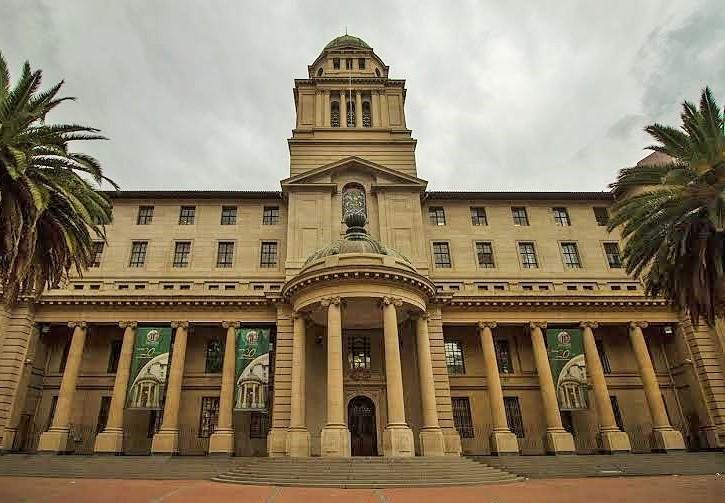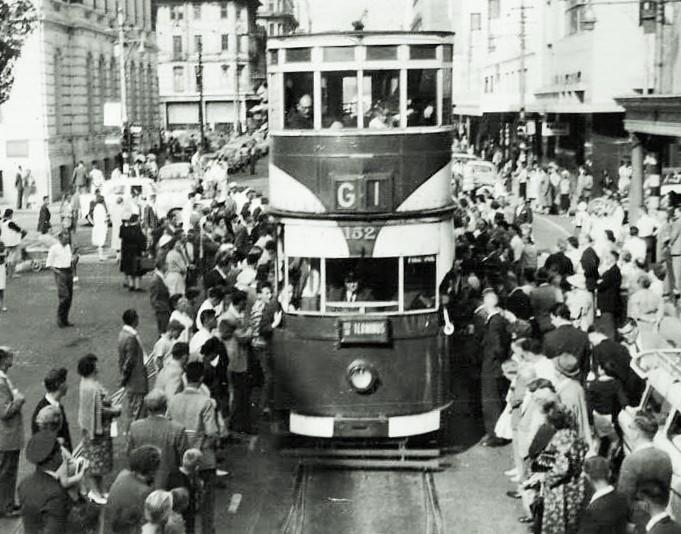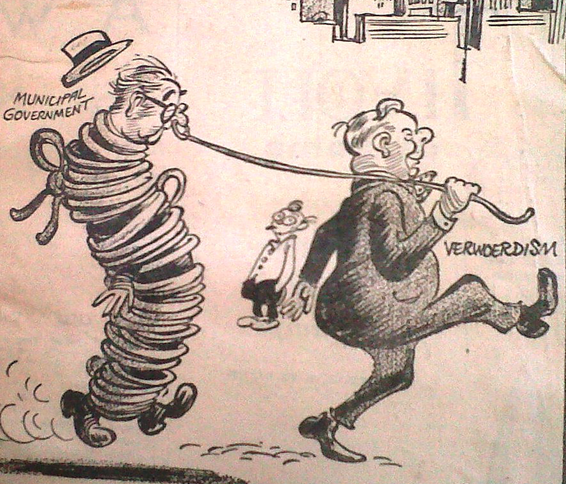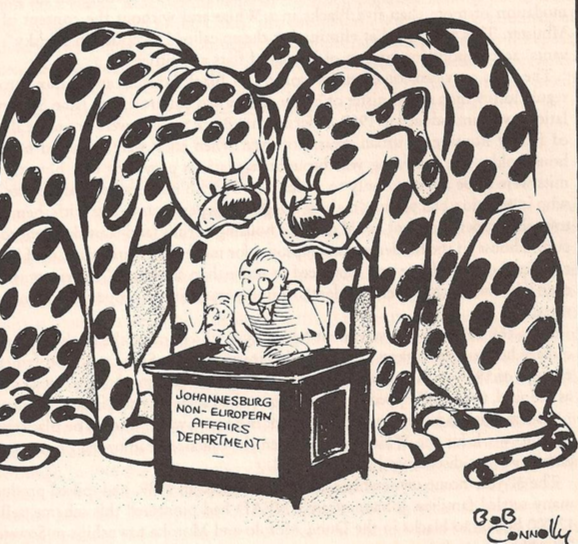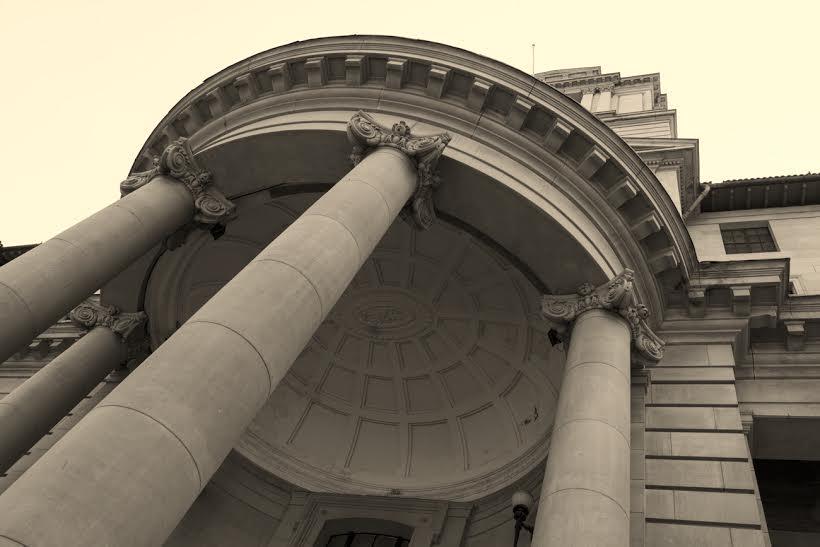
Disclaimer: Any views expressed by individuals and organisations are their own and do not in any way represent the views of The Heritage Portal. If you find any mistakes or historical inaccuracies, please contact the editor.
This small handbook was literally a pocket filler. It was an annual Johannesburg City publication Vade-Mecum. The meaning of the word, Vade-Mecum, is the Latin expression "go with me". It is a small slender volume issued by the City Treasurer's Department and by 1949 was in its 19th edition. What a contrast to current glossy city reports and promotional books. I recently received a 156 page document with the glamour and glitz of promotional advertising, all the emphasis on colour and layout, all with the objective of marketing city properties for long term lease. In 1949 this little book was a no nonsense factual approach for the citizens and ratepayers of Johannesburg, to provide all the necessary information about the city's affairs and its finances. It's a concise ready reference about the activities of the City Council.
Book Cover
In 1949 the city treasurer was Dr I Q Holmes who managed a capital outlay of £52 million in a year when the population was estimated at 839 154. This little guide starts with the Abattoir and the Live stock Market and ends with the Zoological Gardens and covers almost everything the city was responsible for from A to Z. Did you know that in 1949 there were an estimated 2 664 animals and birds in the zoo? This handy guide tells you the acreage of every park in town and the capital outlay of each. In 1949 there was a Johannesburg City Orchestra giving 125 symphony concerts. The city had a rateable value of £217 million.
Johannesburg was 64 years old in 1949. The city was well organized and efficient operating out of the Johannesburg City Hall. This was where people paid their rates in the rates hall or bought their booklets of bus tickets.
City Hall Johannesburg - Gauteng Legislature today (Mark Straw)
Old Rates Hall (Kathy Munro)
The Tramways Department ran the trams and the buses. There were 212 double decker tram cars in service, 134 buses and another 123 trolley vehicles so at that date trams were outnumbered and not surprisingly the last tram ran in 1961.
Joburg's Last Tram
Local government was all about the nuts and bolts of urban living, all the amenities and services of a colonial city using its rates and taxes to provide essential services such as electricity, water distribution, sewerage, fire fighting, ambulances, gas, parks, public swimming pools museums, libraries, transport etc. The reach of the city was surprisingly wide. It ran a pound, a public health department and a produce market and that is only the "p". One has only to think of all of the services the city ran and still runs (though today there is far more rent seeking with outsourcing and company structures) to grasp why city life, when it works well, is so appealing. Living standards, even for poor people, are much higher than in rural areas because of all the city amenities. All the services, facilities and shared amenities made the city the obvious choice.
Johannesburg had the distinction of being the youngest and newest of the Great Cities of the World. In 1954 W A Robson produced a useful compendium of cities: "Great Cities of the World, their government, politics and planning". (Allen and Unwin, 1st edition 1954, 2nd edition 1957). Johannesburg by 1954 had a population of a million and ranked along with other great cities old and new such as London, Rio, Los Angeles, Singapore, Zurich and Sydney or what about Chicago or Cologne. Interesting that it was the only African city included in this major study.
Great Cities of the World Book Cover
Great Cities of the World List
The volume is dated but I think the chapter on Johannesburg by L P Green who worked on city problems in the Town Clerk's Department is an excellent quick introduction to the history of Johannesburg city government. It highlights how local government worked when the Voters Roll in 1948/49 comprised a mere 183 000 people and Joburg was a segregated city. Johannesburg only achieved city status in 1928. The City Council ran the City with city councillors elected for three year periods to serve and be accountable to their wards. In 1954 there were forty two councillors. Mayors held office for only a year, the role was largely ceremonial, social and civic and the Deputy mayor succeeded in the following year. The mayor in 1948-9 was S.P. Lee and for 1949 to 1950 it was Jack Mincer for whom Jack Mincer parking garage located at the old Union grounds was named. Today that is the Nood Street Taxi rank and the parking ramps are not suitable for taxis.
In 1949 everything was arranged around nine functioning and functional committees (1955 General Purposes, Finances, Health and Social Affairs, Non European Affairs and Housing, Public Amenities, Public Utilities etc.) and in addition there were 22 departments. In 1949 the total number of employees was over 23 000. Running this city around the mid 20th century was a huge enterprise.
Employee Stats 1949
The suburbs at mid century ran from Abbotsford, Albertsville and Argyll to Winston Ridge, Wolhuter and Yeoville. The Vade-Mecum tells us the valuation of the suburb, the rates paid, the street mileage and cost and the number of stands. All of this is incredibly useful for any researcher. The Vade-Mecum gives a sense of ownership and accountability. Here is quick access to all the facts and figures a citizen needed to understand the city.
What were the problems and weaknesses of the city? What eludes the commentators and critics of the period was the racially segregated nature of the city. Services were segregated. Black people (termed Non Europeans in that era) lived in the townships while white people or "Europeans" lived in the suburbs. Their lives intersected and crossed in employee / employer relationships and in the work environment in general. The city council behaved in a paternalistic way towards both whites and black people. The Non European Affairs Department concerned itself with Coloured housing in Claremont, Noordgesig and Coronationville, housing for Africans (then called Native housing), Beer Halls, the Denver Men's Hostel, the Mai-Mai Native Bazaar and Hostel and so on. The details are all here. Orlando Township dated to the early 1930s and was a project of the City Council with the idea of creating a garden suburb. There is no entry for "Soweto" in the Vade Mecum of 1949 as that term had not yet come into common parlance.
A view of Meadowlands, Soweto in the 1950s
In many ways the City Council as the local authority was the public spirited godfather of the young city. The men who served on the Council (with very few exceptions all men) were men who had been immigrants in their youth or were second generation Johannesburg people. They considered that as city fathers, they had the right and the knowledge to run local government affairs in the interests of all. City government was still a very small scale affair but "it was a small tail wagging a pretty big dog". These were the men who wore the golden mayor chain with pride as each year another link was added for a new mayor. Johannesburg had all the right insignia and its African Museum and City Library strived to build a golden heritage. The citizens of Johannesburg were proud to have fought for their right to local self government by elected representatives.
Councillor Edmund wearing the mayoral chain of office in 1936
Politics always looked on the horizon. It's interesting to read the Green chapter that politics in the earliest days was submerged to create a city identity but the period from 1912 to 1947 saw the rise and fall of the Labour Party and this was the era of the two great strikes of 1913 and then the 1922 great revolt. After the coming to power of the National Party in 1948, Johannesburg was run by the United Party which brought local government into conflict with the National party dominated provincial and national government and the Pretoria viewpoint.
A Bob Connolly cartoon commenting on the tensions between local and national government
Another Connolly cartoon, this time critiquing the 'watchdog' committee that was appointed to ensure that the JNEAD followed apartheid policy
Over the years the city did not escape organizational, financial, planning and development problems. Over time metropolitan thinking and planning was required as Johannesburg dominated the national economy and was the financial hub of Southern Africa. City government was a player in a very daunting space and professionalized over the years to respond to these challenges, sometimes though losing touch with the ordinary rate paying suburban citizen.
Main image: Johannesburg City Hall Entrance (Mark Straw)
Kathy Munro is an Honorary Associate Professor in the School of Architecture and Planning at the University of the Witwatersrand. She enjoyed a long career as an academic and in management at Wits University. She trained as an economic historian. She is an enthusiastic book person and has built her own somewhat eclectic book collection over 40 years. Her interests cover Africana, Johannesburg history, history, art history, travel, business and banking histories. She researches and writes on historical architecture and heritage matters and is well known for her magnificent book reviews. She is a member of the Board of the Johannesburg Heritage Foundation and is a docent at the Wits Arts Museum. She is currently working on a couple of projects on Johannesburg architects and is researching South African architects, war cemeteries and memorials.
Comments will load below. If for any reason none appear click here for some troubleshooting tips. If you would like to post a comment and need instructions click here.

